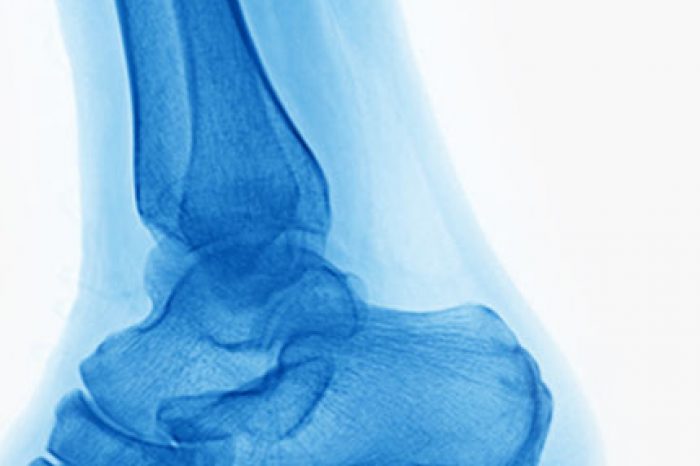
Patients with fat pad atrophy often feel like they are walking on their heel bone. When the natural cushioning under the ball or heel of the foot thins, each step transfers painful pressure to the bones and joints.
Traditionally, conservative measures like orthotics or padding provide only temporary relief. Surgical innovation, however, is opening new doors—particularly through tissue grafting. Two important clinical studies highlight different approaches: one using acellular dermal allografts (donor graft material) and the other using autologous fat grafting (a patient’s own fat).
Dr. Thomas Rocchio’s review of 25 patients treated with an acellular dermal allograft demonstrated that grafting can effectively restore thickness to the foot’s cushioning tissue.
Technique: Using a minimally invasive “parachute technique,” the graft was placed into areas of fat pad loss.
Results: Over 95% of patients reported satisfaction, with ultrasound showing maintained tissue thickness up to a year.
Applications: Even patients with diabetes and a history of ulceration experienced healing without recurrence.
Key insight: Tissue grafts can provide a structural solution when cushioning is lost, validating grafting as a valuable strategy in treating fat pad atrophy.
Read the Rocchio study on PubMed
While the Rocchio study confirms that tissue grafts are effective, there’s a compelling argument for using a patient’s own tissue whenever possible.
A prospective randomized clinical trial at the University of Pittsburgh by Gusenoff et al. evaluated autologous fat grafting for foot fat pad atrophy. Researchers found:
Pain relief and improved function: Patients receiving fat grafts had significantly less pain and better mobility at 12 months.
Protective effect: Fat grafting helped prevent worsening foot pressures compared to standard care.
Safety and minimal downtime: Harvesting a small volume of fat from the abdomen or flank and reinjecting it into the foot was safe and well tolerated.
Key advantage: Using your own tissue eliminates the risk of immune reaction or rejection. Autologous fat is biocompatible, natural, and regenerative, with evidence showing it can integrate and cushion effectively.
Read Gusenoff's study on autologous fat grafting on PubMed
| Graft Type | Source | Benefits | Considerations |
|---|---|---|---|
| Acellular Dermal Allograft | Donor-derived human dermal tissue | Maintains structure, effective in diabetics, strong pain relief | Requires incision, foreign tissue (though processed) |
| Autologous Fat Graft | Patient’s own fat (abdomen, flank) | Natural, safe, regenerative, minimally invasive | Fat can resorb over time; may need repeat treatment |
Both options validate tissue grafting as an effective treatment for fat pad atrophy, but autologous grafting offers the added benefit of being your own living tissue.
If you’ve struggled with persistent foot pain despite orthotics, shoe changes, or callus care, tissue grafting may offer a lasting solution. Candidates often include:
Patients with age-related thinning of the fat pads
Those with pain after surgery, injury, or steroid injections
Patients with diabetes who have difficulty healing (with careful selection)
The Rocchio study proved that tissue grafts can restore lost cushioning and reduce pain. The University of Pittsburgh trial showed that autologous fat grafting—using your own natural tissue—can do the same, with the added benefits of safety, biocompatibility, and natural integration.
If walking feels painful and every step is a struggle, it may be time to explore tissue grafting options—especially autologous fat transfer. Learn more about this minimally invasive approach:
(781) 591-7855
20 Walnut St
Suite 14
Wellesley MA 02481
Processing adipose tissue using Lipogems to concentrate microfragemented adipose tissue and adipose derived stem cells.
Foot fat pad atrophy happens when the natural cushioning under your heel or forefoot thins out. Without this padding, walking can feel like stepping directly on bone, leading to pain, calluses, or even ulcers.
Conservative treatments include orthotics, shoe inserts, and padding. When these stop working, surgical options like tissue grafts or autologous fat transfer can restore lost cushioning.
Autologous fat grafting uses your own fat, taken from the abdomen or flank, and injected into the foot. In the University of Pittsburgh trial, patients experienced significant pain relief and improved function at 12 months.
Typically, patients usually minimize weight bearing on the treated foot for 2 weeks, and then gradually return to walking.
Both fat grafting and tissue grafts are performed with local anesthesia. Patients in both studies reported only mild discomfort, similar to typical outpatient foot procedures.
With fat grafting, some resorption is expected, and repeat treatments may be needed over time, but longer-term data are still limited.
You may be a candidate if you have:
Painful thinning of the fat pads under the ball or heel
Pain after surgery, injury, or steroid injections
Diabetes with a history of foot ulcers (carefully evaluated case by case)
Most insurers may label fat grafting as a cosmetic procedure.
Rocchio TM. Augmentation of atrophic plantar soft tissue with an acellular dermal allograft: A series review. Clin Podiatr Med Surg. 2009;26(4):545-557. doi:10.1016/j.cpm.2009.07.001. PubMed link
Gusenoff JA, Mitchell RT, Jeong K, Wukich DK, Gusenoff BR. Autologous fat grafting for pedal fat pad atrophy: A prospective randomized clinical trial. Plast Reconstr Surg. 2016;138(5):1099-1108. doi:10.1097/PRS.0000000000002667. PubMed link
Adductor longus selective tenotomy is a modern surgical treatment for chronic groin pain that offers faster recovery and better outcomes than traditional full release surgery. The adductor longus, an inner thigh
Read MoreDiscover how ultrasound helps diagnose plantar fat pad atrophy, a leading cause of ball-of-foot pain. Learn about symptoms, thickness cutoffs, and why early detection matters for relief.
Read More